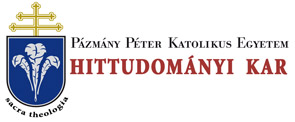Folia Theologica et Canonica 5. 27/19 (2016)
RECENSIONS
RECENSIONS 269 (pp. 121-138); crystallization process of the theological and canonical principles regarding the administration of extreme unction (pp. 139-162); theological and canonical concepts on the seven vices, in particular attention to the historical sources of canon law in relation with the sacramental and penal law of the Church (pp. 163-183); manifesting forms of the principle of justice and mercy within the canonical system, based on the disciplinary tradition of the Church (pp. 184-202); development of canonical discipline regarding the temporal goods of the Church - its historical sources and contemporary effects - (pp. 203-221); miracle and its role in the canonical process of beatification and canonization based on the ecclesiastical sources of the different epochs of the Church (pp. 222-237); finally, it contains a nowadays unique chapter about the development of the ecclesiastical concept on relics, its development, disciplinary sources and on its very rigid principles (pp. 238-248). This volume - even it analyzes the current universal and particular law of the Catholic Church based on different single fields - is able to give a comprehensive picture on the entire spectrum of canon law as independent sacred juridical system, including its particular method, function (i.e. pp. 17-39). Here must be indicated that summarizing description which enlightens the relations between the current and the early ecclesiastical sources. Within this particular chapter the author gives an extraordinary precise analysis on the indispensable status of the disciplinary sources of the single ages - since the Patristic Age - and their contents, reason, and goal in order to understand - even a basically new - ecclesiastical regulation, particularly if anyone likes to translate the Latin canonical rule to any other language, preserving the exact original meaning of that (pp. 28-34). There is also an indispensable contribution of the author to help to understand the current Latin liturgical norms of celebration of the Holy Eucharist as compared with the old liturgical rules, not only regarding celebration of the Holy Mass but other sacraments and sacramentáis too. The author - using a crystal clear argumentation - was able to give a very balanced and objective overview on this question, and it can help a lot in the cleansing of those anomalies which arise many times in the field of sacramental theology and sacramental law, but it also help to understand the meaning and intention of the new regulations, promulgated by the Supreme Ecclesiastical Authority (pp. 97-120). We really appreciate that precise, accurate analysis - based on the original sources, from the earliest one - which could help to sketch a much more perspicuous picture about the constant canonical realization of justice and mercy within the system of canon law (pp. 184-202), explaining not only the canonical tradition and its aspects in the early and Medieval pastoral life, but listing the most important dogmatic theological statements too (i.e. pp. 187-189). Those observations which consider the real zeal and disciplinary development of the ecclesiastical temporal goods are also very significant (pp. 211-222). I like to emphasize too the new results of those chapters which describe the
